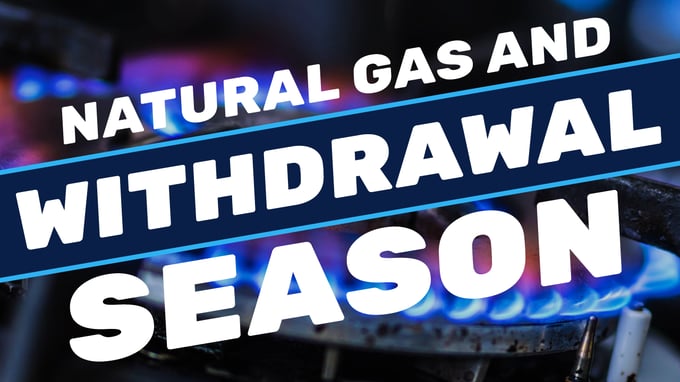
The annual natural gas withdrawal season, when heating demand peaks, runs from November through March. The injection season, when stockpiles increase for the next peak season, is April through October.
Natural gas prices tend to rally at the start of the withdrawal season, but during late 2023 and early 2024, prices primarily made lower highs and lower lows. The continuous U.S. natural gas futures contract for delivery at the Henry Hub in Erath, Louisiana, peaked at $3.392 in January 2024, far below the August 2022 $10.028 high, the highest price since 2008. The futures reached a $1.511 low in February as ample supplies and temperate weather conditions left stocks at the highest level in years. As of the week ending on March 15, there were 2.332 trillion cubic feet of natural gas in storage across the United States after the first seven bcf injection of 2024. Stocks fell to 2.325 tcf the prior week, the highest level in years. Time will tell if 2.325 trillion cubic feet in storage will be the low for the withdrawal season. The most recent peak at the end of the withdrawal season was in 2020, when the energy commodity went into the injection season with 1.986 trillion cubic feet.
Over the past years, U.S. natural gas has become a more international commodity, as liquefied natural gas now travels beyond the North American pipeline network by ocean vessel to countries where prices are far higher. The August 2022 rally occurred when European prices soared to record highs because Russia invaded Ukraine, and sanctions on Moscow caused supply fears. However, prices have come back down to earth.
Over the past weeks, since mid-February, nearby U.S. natural gas prices have traded in a narrow $1.511 to $2.009 range.
As the market heads into the injection season with the highest inventories in years, the potential for a rally could be in the hands of traders holding aggressive short positions.
U.S. and European Natural Gas prices are at low levels
- After trading at a twenty-five-year high of $10.028 in August 2022, nearby April NYMEX natural gas prices were under the $1.70 per MMBtu level on March 25.
- K. natural gas futures prices dropped from a record 800 pounds in March 2022 to below the 75 level in late March 2024.
- Dutch natural gas futures prices plunged from 345 euros in March 2022 to under 29 in late March 2024.
Inventories and the open number of open long and short positions in the U.S. futures market are high- Rigs have declined
- The 2023/2024 U.S. natural gas withdrawal season may have ended with inventories at 2.325 trillion cubic feet. At 332 tcf for the week ending on March 15, natural gas stocks across the United States were 21.4% above last year and 41% over the five-year average for mid-March.
- Open interest: the total number of open long and short positions in the U.S. NYMEX natural gas futures market was above the 1.547 million contract level, approaching a record high, indicating an overabundance of risk positions.
- As of March 22, 112 natural gas rigs were operating in North America, 50 fewer than at the same time in 2023.
U.S. natural gas futures are highly volatile
- Natural gas has a long history as one of the most volatile energy commodities.
- Monthly historical volatility was at the 54.3% level on March 25.
- Highly volatile markets tend to attract significant speculative interest.
The ETF products that track U.S. natural gas prices
- The U.S. Natural Gas Fund (UNG) is an unleveraged ETF that tracks short-term U.S. natural gas futures prices.
- The Ultra Bloomberg Natural Gas 2X ETF (BOIL) seeks to deliver twice the percentage returns compared to natural gas futures on rallies.
- The Ultrashort Bloomberg Natural Gas -2X ETF (KOLD) seeks to deliver twice the percentage return compared to natural gas futures when they decline.
- Leveraged ETFs like BOIL and KOLD suffer from time decay when prices move contrary to expectations or remain stable.
A unique commodity- Risk is always a function of the potential rewards
- The natural gas futures market is as volatile as the combustible raw commodity.
- Natural gas has a long history of boom-and-bust price action.
- If market participants in risk positions seek an exit simultaneously, an overabundance of longs or shorts can cause significant price variance.
- A risk-reward plan is essential when trading natural gas from the long or short side.
- It is never appropriate to alter stops when the market moves contrary to expectations.
- Adjusting stops and profit horizons is acceptable when the natural gas price moves in the anticipated direction.
- Market participants should never forget they are long or short at the current market price, not at the original execution price.
The injection season is ending with a historically high level of inventories. While supply and demand fundamentals remain bearish, falling rig counts and the potential of an overabundance of speculative short positions could cause a sudden and violent upside correction.
Thanks for reading, and stay tuned for the next edition of the Tradier Rundown!